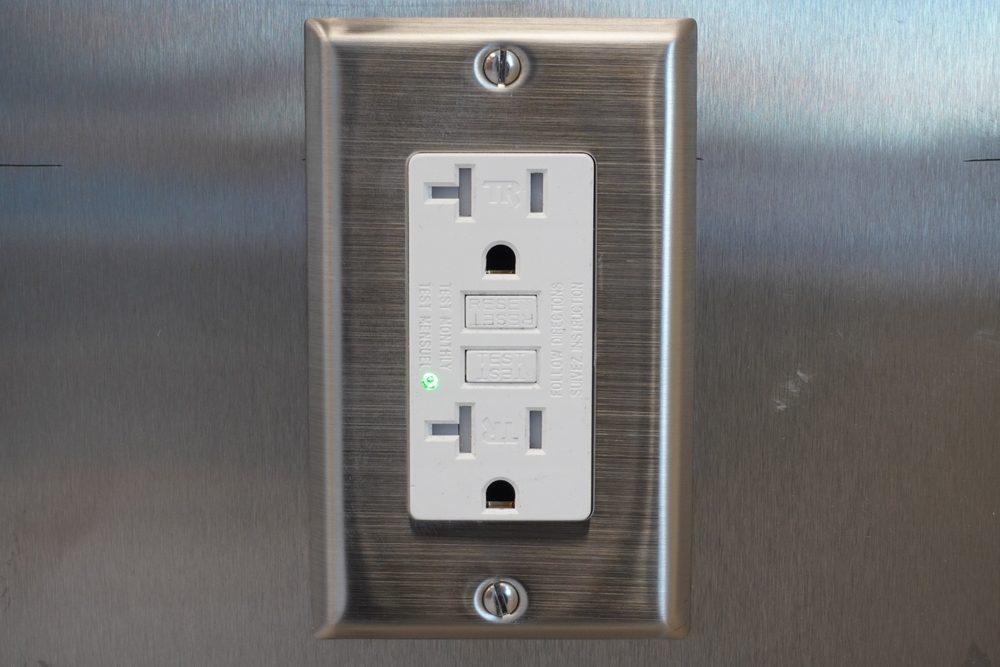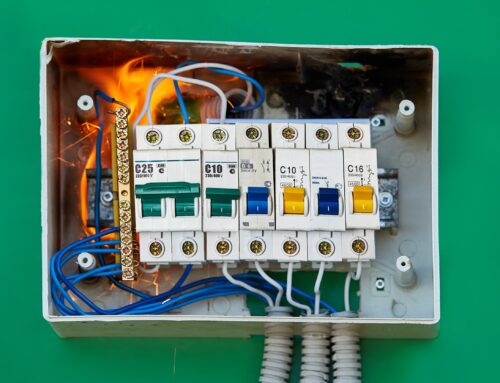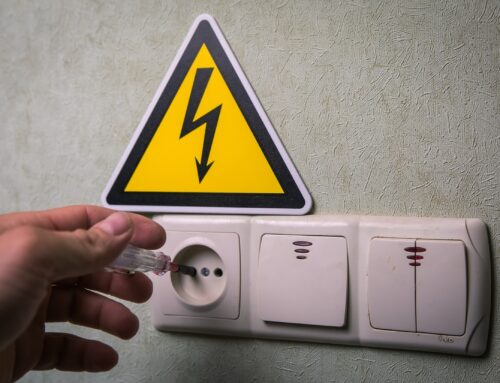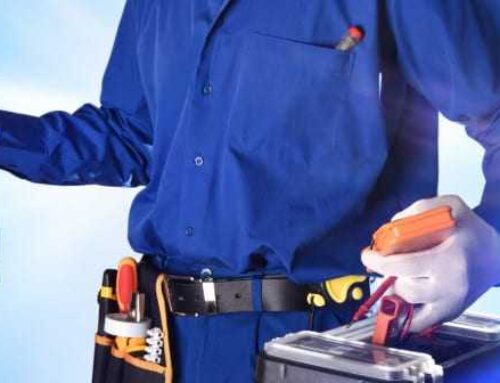GFCI (Ground Fault Circuit Interrupter) is an important safety device that is designed to protect you and your property from electrical hazards. GFCI issues can be a concern for homeowners and electricians alike, but understanding how they work and how to troubleshoot common problems can help ensure your safety.
What is a GFCI?
A GFCI is a type of electrical outlet or circuit breaker that is designed to protect against electrical shocks and fires caused by ground faults. Ground faults occur when electricity travels through an unintended path, such as through a person’s body, to the ground. GFCIs monitor the electrical current and automatically shut off the power if they detect any deviation from the normal current flow, preventing potential injuries or accidents.
Common GFCI issues and how to troubleshoot them
GFCI keeps tripping:
A GFCI outlet is designed to protect you from electrical shocks and fires by shutting off the power if it detects any deviation from the normal current flow. If your GFCI outlet keeps tripping, it can be a sign that there is a problem that needs to be addressed. There are several reasons why your GFCI outlet may be tripping.
One of the most common reasons why a GFCI outlet trips is due to an overload. An overload occurs when there is too much electrical current flowing through the circuit. This can happen when you have too many appliances plugged into the outlet at the same time or when an appliance draws more current than the circuit can handle. To troubleshoot an overload, unplug all the appliances from the GFCI outlet and reset it. If the GFCI does not trip after resetting it, the problem is likely caused by one of the appliances. You can plug them in one by one to determine which appliance is causing the issue. Once you have identified the problem appliance, you can either repair or replace it to prevent future GFCI tripping.
Another reason why a GFCI outlet may trip is due to a ground fault. A ground fault occurs when electricity travels through an unintended path, such as through a person’s body, to the ground. This can happen when there is damage to the wiring or insulation, or when water comes into contact with the wiring. To troubleshoot a ground fault, unplug all the appliances from the GFCI outlet and reset it. If the GFCI still trips after unplugging all the appliances, there may be a wiring issue, and it’s best to call an electrician.
It is important to note that GFCI outlets can also wear out over time, so if you have an older one, it may not be functioning properly. In this case, replacing the GFCI outlet with a new one can often solve the problem.
In conclusion, if your GFCI outlet keeps tripping, there are several potential reasons why this may be happening. It is important to troubleshoot the problem to ensure that your GFCI outlet is functioning properly and keeping you safe from electrical hazards. If you are unsure about how to troubleshoot the issue, it’s best to call a licensed electrician for assistance.
GFCI won’t reset:
If you find that you are unable to reset your GFCI outlet, there are a few potential causes and troubleshooting steps you can take.
First, try unplugging all the appliances that are currently connected to the GFCI outlet. Once everything is unplugged, try pressing the reset button again. If the GFCI outlet still won’t reset, there may be an issue with the wiring.
One possible issue is that the GFCI outlet is connected to other outlets or fixtures on the same circuit. In this case, you may need to check and reset any other GFCI outlets or circuit breakers that are connected to the same circuit. Sometimes a GFCI outlet will trip because of another GFCI outlet on the same circuit that has tripped.
Another possible issue is that the GFCI outlet itself is faulty. GFCI outlets can wear out over time or be damaged by electrical surges or other factors. If you have tried resetting the outlet and checking for any other issues with the circuit and it still won’t reset, it may be time to replace the GFCI outlet.
Replacing a GFCI outlet is a relatively simple process, but it does require some basic knowledge of electrical wiring. If you are not comfortable working with electricity or do not have experience with electrical work, it’s best to call a licensed electrician to replace the outlet for you. An electrician can also help troubleshoot any other potential issues with the circuit or wiring that may be causing the GFCI outlet to malfunction.
In conclusion, if you find that your GFCI outlet won’t reset, there are several potential causes and troubleshooting steps you can take. First, unplug all appliances connected to the outlet and try resetting it again. If that doesn’t work, check for other GFCI outlets or circuit breakers on the same circuit that may have tripped. If there are no other issues with the circuit, the GFCI outlet may be faulty and need to be replaced. Remember to always exercise caution when working with electricity and seek professional help if you are not comfortable with electrical work.
GFCI outlets not working:
GFCI outlets are an important safety feature in homes and other buildings, as they are designed to protect against electrical hazards by shutting off power if there is a ground fault. However, if your GFCI outlets are not working, there may be an issue with the outlet or the wiring that requires attention.
If you find that your GFCI outlets are not working, the first step is to check if they have tripped. Look for the reset button on the outlet and press it to see if it will reset. If the outlet resets and begins working again, you may have experienced a minor electrical fault or surge that caused the outlet to trip. However, if the outlet will not reset, or if it continues to trip repeatedly, you may have a more significant issue that requires further troubleshooting.
If your GFCI outlet will not reset or continues to trip, the next step is to check the circuit breaker for the outlet. Make sure the circuit breaker is in the “on” position and not tripped. If the circuit breaker is tripped, reset it and see if the GFCI outlet will work again. If the circuit breaker trips again, you may have a wiring issue that needs to be addressed.
If the circuit breaker is not tripped and the GFCI outlet still will not work, it’s possible that there is a wiring issue with the outlet or the circuit. In this case, it’s best to call a licensed electrician to inspect the wiring and determine the cause of the problem. Wiring issues can be dangerous and should only be addressed by a qualified professional.
In conclusion, if your GFCI outlets are not working, the first step is to check if they have tripped and attempt to reset them. If they will not reset or continue to trip, check the circuit breaker for the outlet. If the circuit breaker is not tripped and the GFCI outlet still will not work, call a licensed electrician to inspect the wiring and determine the cause of the problem. Remember to always exercise caution when working with electricity and seek professional help if you are not comfortable with electrical work.
GFCI keeps tripping during bad weather:
Thunderstorms or heavy rain can cause GFCIs to trip due to electrical surges. These surges can occur when lightning strikes nearby power lines or when water gets into the electrical system, causing the current to flow through unintended paths. If your GFCI outlet trips frequently during bad weather, there are a few things you can do to address the issue.
One option is to install a surge protector. Surge protectors can protect your electrical devices and outlets from power surges caused by lightning strikes or other electrical disturbances. They work by absorbing excess electrical energy and redirecting it away from your devices, helping to prevent damage to your electronics and electrical system.
Another option is to move the GFCI outlet to an area that is less exposed to the elements. For example, if the outlet is located outside or in an area that is particularly vulnerable to water damage, moving it to a more protected location can help reduce the risk of electrical surges caused by bad weather.
It’s also important to ensure that all of your electrical devices and appliances are properly grounded. Grounding provides a safe path for electrical currents to flow, helping to prevent electrical shocks and fires. If your devices or appliances are not properly grounded, it can increase the risk of electrical surges during bad weather.
In addition, it’s a good idea to have your electrical system inspected by a licensed electrician. They can check for any issues with the wiring or electrical system that may be contributing to GFCI tripping during bad weather. An electrician can also make recommendations for ways to improve the safety and reliability of your electrical system.
In conclusion, GFCI outlets can trip during bad weather due to electrical surges caused by lightning strikes or water damage. To reduce the risk of GFCI tripping, consider installing a surge protector, moving the GFCI outlet to a less exposed location, ensuring that all devices and appliances are properly grounded, and having your electrical system inspected by a licensed electrician. By taking these steps, you can help protect your electrical system and your home from the dangers of electrical surges.
GFCI is old and outdated:
As with any electrical device, GFCIs can wear out over time and become outdated. If you have an older GFCI outlet, it may not be functioning properly, and you may experience frequent issues such as tripping or not being able to reset the outlet. In this case, it may be time to consider replacing it with a newer model.
Newer GFCI outlets are designed with improved safety features, including better sensitivity and faster response times. They also meet updated safety standards and regulations, providing better protection against electrical hazards. Additionally, newer GFCIs often include helpful features such as self-testing capabilities, which can help ensure that the outlet is functioning properly.
If you’re experiencing frequent issues with your GFCI outlet, it’s important to first troubleshoot the issue to determine the root cause. This may involve unplugging all devices from the outlet and attempting to reset it, or checking the circuit breaker to ensure that it’s not tripped. If these steps don’t resolve the issue, it may be time to consider replacing the outlet.
When replacing a GFCI outlet, it’s important to follow proper electrical safety procedures. This may involve turning off the power to the outlet at the circuit breaker, testing the outlet with a voltage tester to ensure that it’s not live, and properly grounding the new outlet. If you’re not comfortable working with electrical systems, it’s best to call a licensed electrician to replace the outlet for you.
In conclusion, if you have an older GFCI outlet that is not functioning properly, it may be time to consider replacing it with a newer model. Newer GFCIs offer improved safety features and better protection against electrical hazards. When replacing a GFCI outlet, it’s important to follow proper electrical safety procedures or seek the assistance of a licensed electrician. By ensuring that your GFCI outlet is up-to-date and functioning properly, you can help protect your home and your family from the dangers of electrical hazards.
In conclusion, GFCI issues can be concerning, but they can often be easily resolved with some troubleshooting or by calling in a professional electrician. It’s important to make sure that your GFCIs are functioning properly to ensure the safety of you and your family. Remember to test your GFCIs regularly and replace them if they are not working correctly.






